Abundance: uncommon
What: young shoots, young flower buds, young seed pods
How: all young parts raw or cooked
Where: fields
When: spring, summer
Nutritional Value: minerals
Other uses: cordage, tinder
Dangers: Toxic dogbane looks slightly similar, but is smaller. The milky white sap of dogbane can blister skin. Edible milkweed has fine white hairs on it's stem whereas dogbane does not. If the milkweed pod is bitter boil it to improve taste.
Milkweed pod at right size for eating.
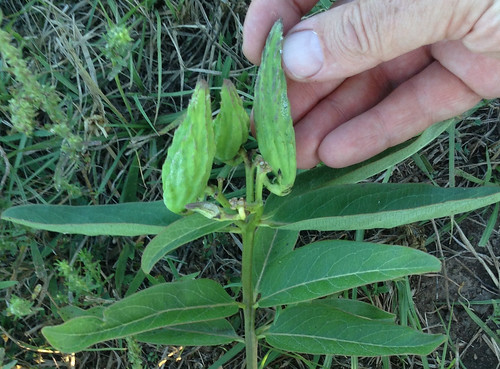
Milkweed pods of Asclepias viridis. These are a bit large and would have been better a week or so earlier.
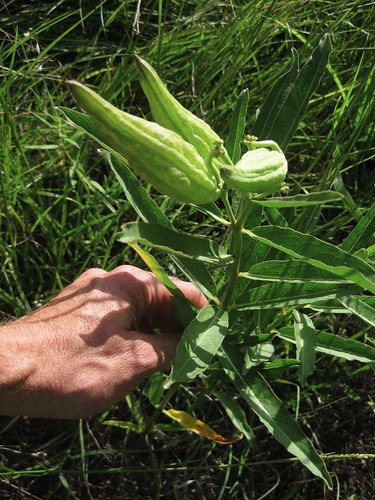
Young milkweed plant before flowering.
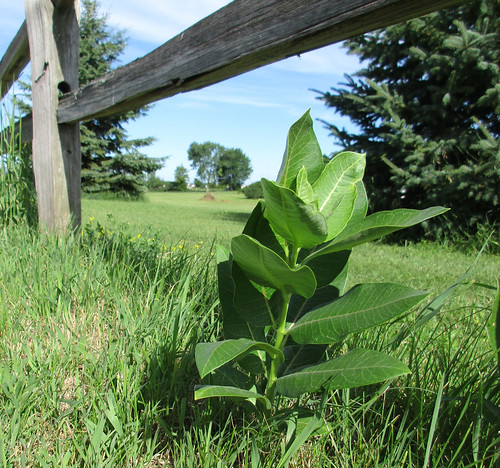
Milkweed flower buds.
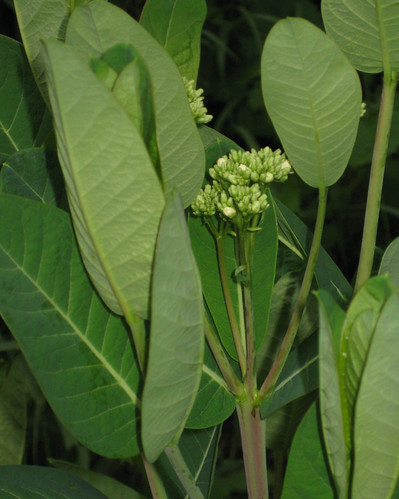
Close-up of milkweed stem and oppositely opposed leaf set. The upright stalks growing from the leaf joints are flower stalks.
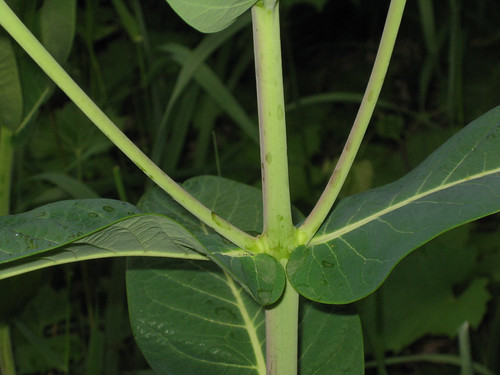
Cluster of Milkweed. The ruler in the picture is 12" long.
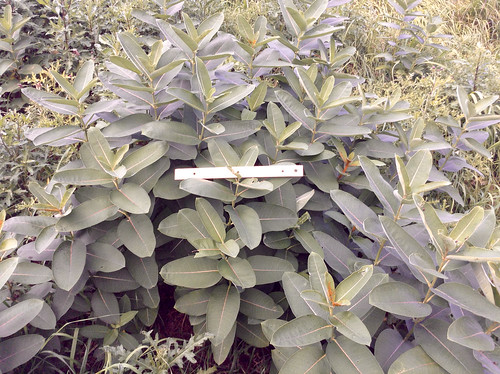
Milkweed flowers.
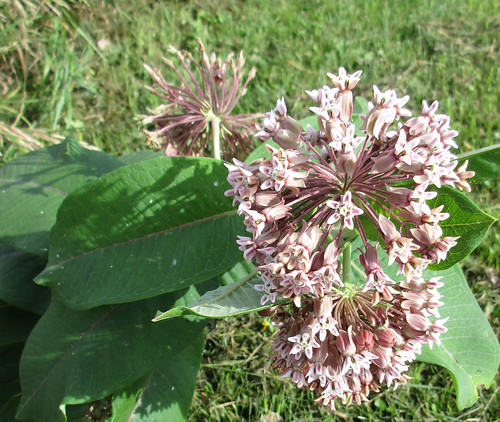
Close-up of flowers.
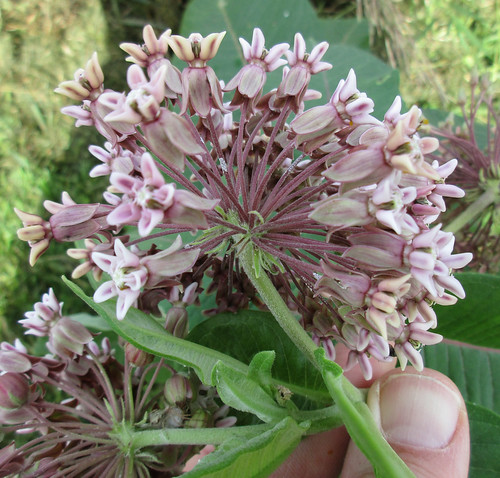
Even closer-up picture of Milkweed flowers.
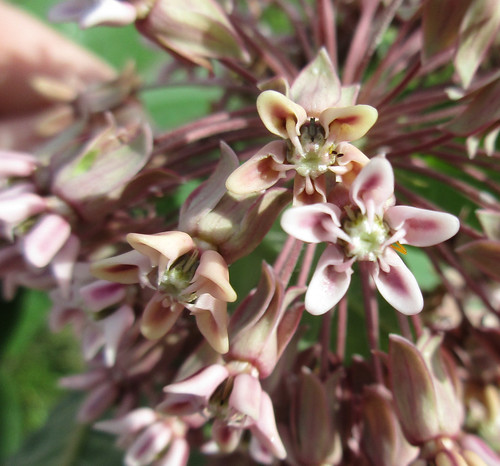
Texas distribution, attributed to U. S. Department of Agriculture. The marked counties are guidelines only. Plants may appear in other counties, especially if used in landscaping.
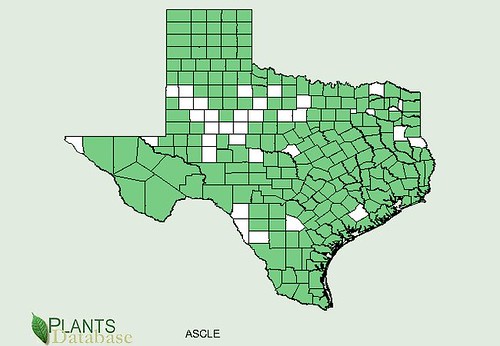
North American distribution, attributed to U. S. Department of Agriculture.
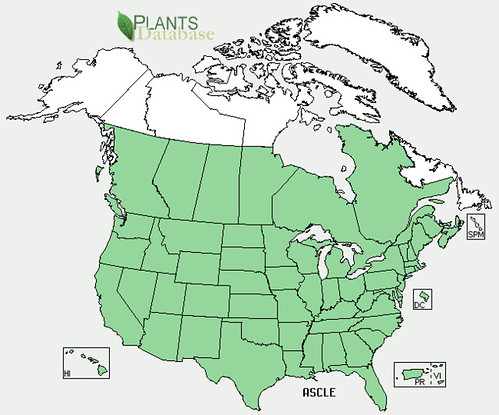
Standing strong and somewhat plastic-looking, milkweed is usually found in low, moist spots of sunny fields. It's long, oval leaves are rather thick and firm, branching off the stem opposite one another, but then rotated 90 degrees between the sets of leaves as you move up/down the stem. The tops of the leaves are more green than their undersides. When broken or cut Milkweeds bleed a white sap, hence their name. In mid-summer their purple/white flowers appear and by September the spiny, alien-looking pods are ready to release their fluffy seeds.
The young, tender pods are steamed or boiled before eating. If the pods are bitter then boil them in one or more changes of water. The insides of the pods should still be undeveloped without sign of fluffy of the brown, flat seeds.
The milkweed stem contains very strong natural fibers which can be braided into fine cordage. These are the preferred plants of Monarch butterfly caterpillars.
Buy my book! Outdoor Adventure Guides Foraging covers 70 of North America's tastiest and easy to find wild edibles shown with the same big pictures as here on the Foraging Texas website.

